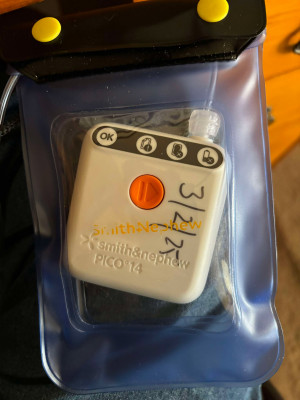The first thread, Tomorrow ...., is becoming long, so here's a new one documenting my experience with breast cancer treatment.
I do this as I see value in other women having a familiarity with what could be involved in addressing cancer for their own or a loved one's treatment one day. Everyone's cancer and treatment is unique to the individual.
**************
A great benefit to me has been the kind and genuine support, interest, and encouragement from forum members. I am humbled by your kindness and earnestly thank you for it.
**************
The cancers:
1) breast cancer. HER2 positive, meaning that it's aggressive.
2) Paget's disease of the breast - a rare form of breast cancer of the nipple and areola.
Treatment so far:
Doxorubicin. The world's strongest chemotherapy, also known as Red Devil Chemo - named after satan because it's red and because of its side effects.
Paclitaxel. Another chemo often known as Taxol.
Perjeta, a targeted immunotherapy treatment.
Herceptin, a targeted immunotherapy treatment.
Surgery - mastectomy and removal of lymph nodes with implant reconstruction.
**************
This morning, the PICO dressing (with its pump) was removed, and a simple dressing applied. I didn't actually see the scar tissue, but apparently it's (still) almost healed with the deterioration looking only superficial.
I then met the Oncology Radiologist who had a look at the scar tissue and cleared me to start radiation this morning.
I was set up on the table for radiation treatment to begin, but the technician found that there were changes in the breast/chest wall, and radiation treatment could not begin. Thankfully, someone had the foresight to predict this change, and had scheduled an appointment for another planning session. I had to wait around for another 90 minutes, but the session was completed.
Radiation treatment will now commence next Monday 24/2 for 15 sessions Monday-Friday. The Oncology Radiologist now, therefore, does not want the new chemo to commence until after radiation is completed - Monday 17/3 which allows for the Canberra Day public holiday in March (the chemo clinic runs every day of the year, but radiation treatment does not occur on public holidays). This means that drug treatment won't finish until December now, but that's OK.
This is what a PICO pump looks like. It stays in the bag, and is worn around the neck. The OK button should periodically flash green to show that it is working. If the next icon is lit up, it means that the seal around the dressing has lifted and air is escaping. If the third icon is lit, it means that the dressing is soaked in blood/fluid and needs to be replaced. The fourth icon will illuminate if the battery has drained. They cost several hundred dollars and have a 14 day shelf life.
You can see the thin tubing; the other end is embedded in the dressing somehow - not actually visible to me.




